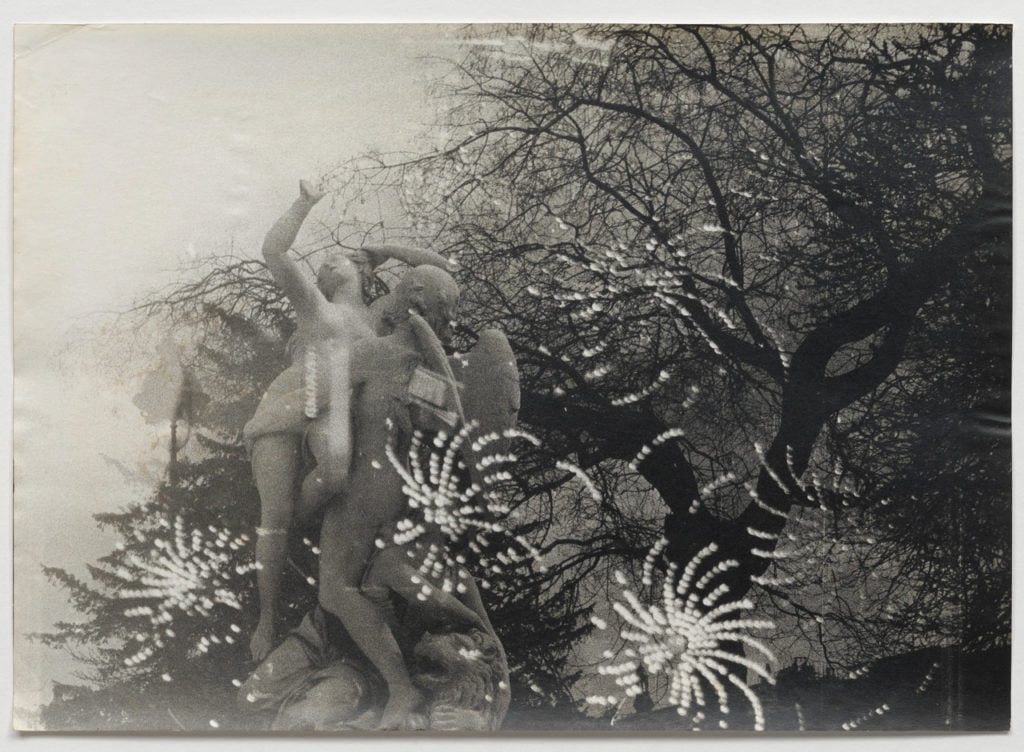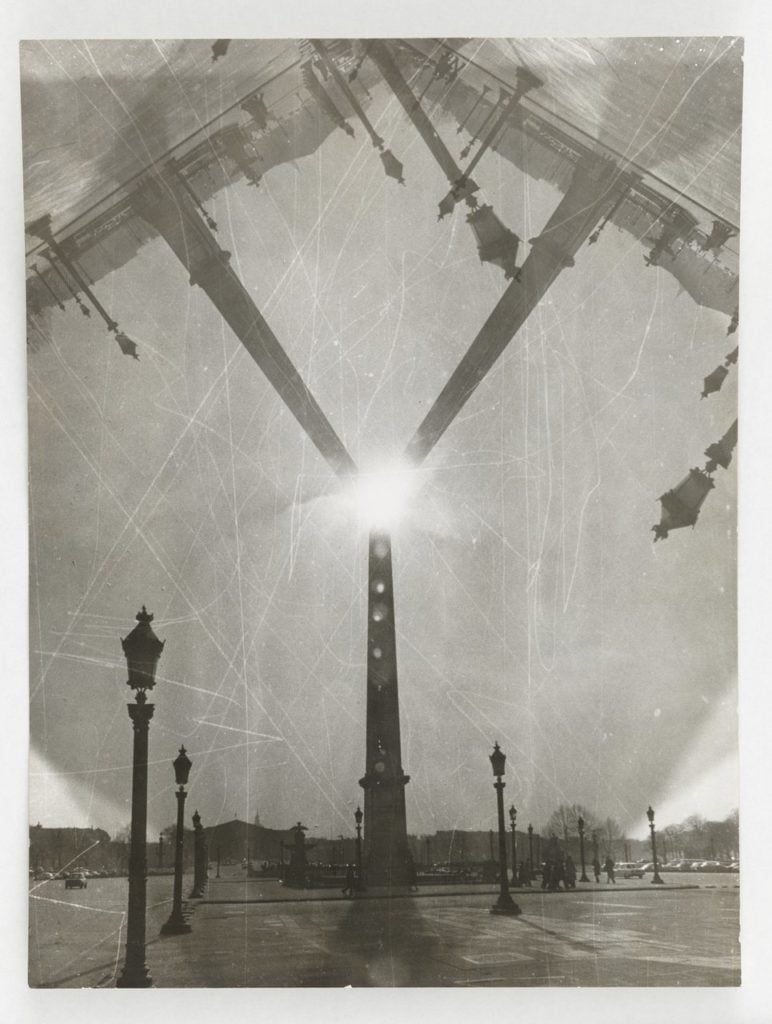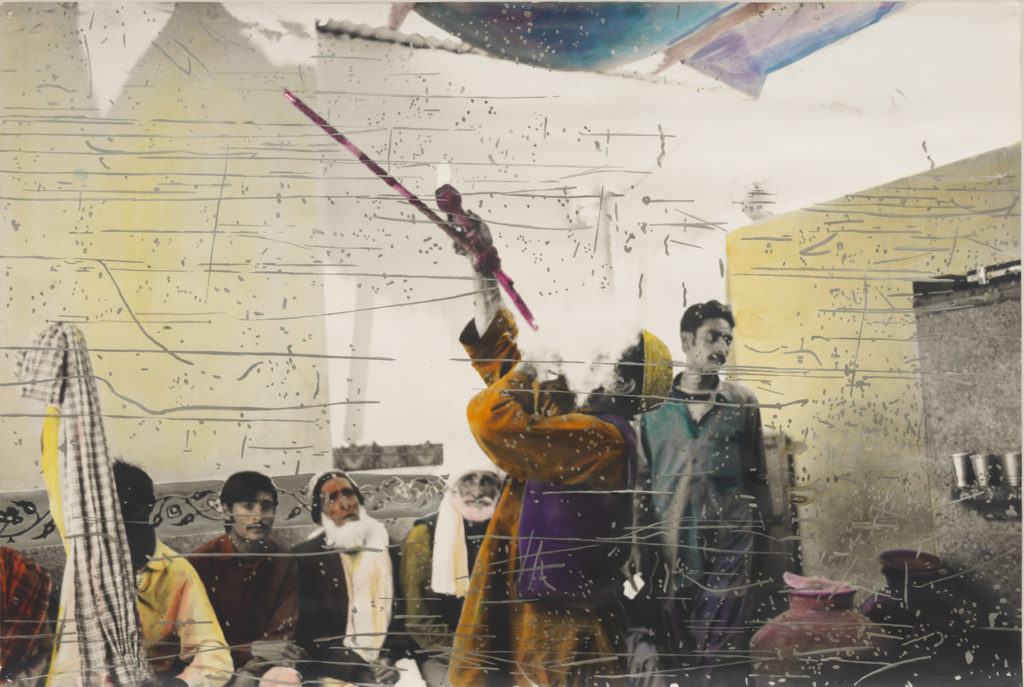Art Fairs
Sigmar Polke’s Photographic Works Make a Rare Appearance at Paris Photo
Polke's insatiable drive to experiment extended to his stunning photography.

Polke's insatiable drive to experiment extended to his stunning photography.

Hili Perlson

An artist who worked with every medium imaginable, it is hardly surprising that Sigmar Polke’s irreverent experimentations extended to photography and its possibilities. At the Paris Photo fair this year, two German dealers—Sies + Höke from Düsseldorf and Kicken Berlin—are showing work from Polke’s most stunning series, which melded photography with painting.
“The Dunkelkammer was his Wunderkammer,” says Sies + Höke’s Corina Hein, describing, with a wonderful German simile, how the darkroom was like a cabinet of curiosities for Polke, who manipulated his prints with exposures and chemical processes that sound like a list of torture methods, and extended as far as to using radioactive uranium.
One of the many highlights on view at the joint booth is Polke’s Paris series, made between 1971 and ’72, which marks the beginning of the artist’s adventures in exploring the various ways he could manipulate the medium, while painting temporarily took a back seat.

Sigmar Polke, Untitled (Obelisk, Paris), (circa 1970). Courtesy Kicken Berlin, Berlin & Sies + Höke, Düsseldorf
The Paris series was made during Polke’s first trip to the French capital, and is seeped with the romanticism of a young man in love. He printed the images under the influence of LSD, over and under-exposing the film, used expired chemicals, and overlapping images.
The resulting kaleidoscopic, multilayered works were “most directly inspired by Polke’s attempt to find an equivalence between printing techniques and the perceptual and psychological effects of hallucinogenic drugs,” writes Paul Schimmel, who showed Polke’s photography at the Museum of Contemporary Art, Los Angeles, in 1995-96.
The Paris series also launched the artist’s photographic accounts of his wanderlust, with some of his most important series created on his travels to Pakistan and Afghanistan in 1974.

Sigmar Polke, Quetta, Pakistan,(1974/1978). Courtesy Sies + Höke, Düsseldorf.
There, he captured bloody bear fights and opium dens. Works from this journey were developed in three different ways: as regular prints, underlayed with another photo, or manipulated and then hand-painted with egg tempera inks and other paints. These are some of the most painterly works he produced in this medium, and, as unique artworks, they come with a price tag that can reach up to €950,000 (over $1.1 million).
Interest in Polke’s photography is, unsurprisingly, mainly institutional. “We had a very good first day,” said Hein of Sies + Höke, which is participating at the fair for the first time. (Kicken Berlin, with whom they share the presentation, is a Paris Photo veteran).
Perhaps more suitable for private collectors, there are works starting at €12,000 ($14,000). More straight-forward photographs from the 1960s, which predate Polke’s experimental manipulations, show sculptural arrangements in his studio, or snaps of accidental and staged, collage-like, moments. These too evince Polke’s unique signature, which Schimmel best describes in his essay as “metaphysical and profound on the one hand, and jocular and deliberately dimwitted on the other.”
Paris Photo is open to the public at the Grand Palais until November 12.